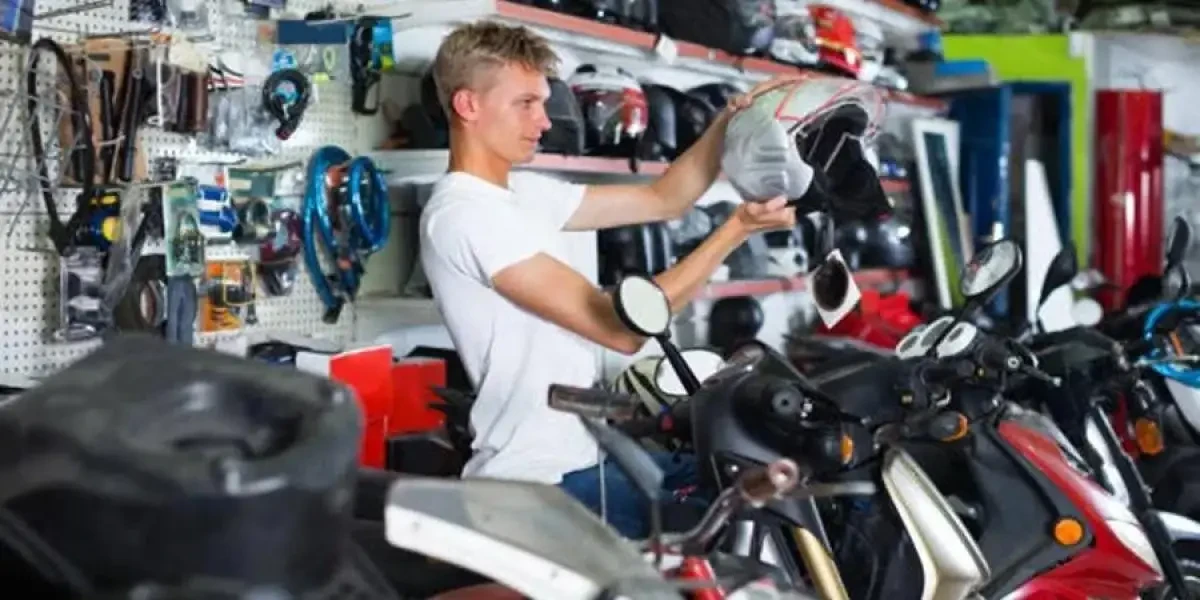Store the very best MX Parts NZ for Your High-Performance Bike
Store the very best MX Parts NZ for Your High-Performance Bike
Blog Article
Mastering Bike Gears: Exactly How to Enhance Your Riding Experience
In the world of motorcycling, mastering the art of equipment manipulation is critical for improving your riding performance. Properly recognizing and utilizing motorbike equipments can considerably influence control, gas, and acceleration efficiency, changing an ordinary trip into a seamless, electrifying journey.
Comprehending Gear Mechanics
At the core of motorbike dynamics, gear auto mechanics play a pivotal duty in converting engine power into movement, ultimately dictating rate and control. The equipment proportions, very carefully created, figure out the relationship in between engine revolutions and wheel turns, influencing acceleration and gas performance.
Understanding equipment auto mechanics begins with acknowledging the importance of the transmission, which houses numerous gears of differing dimensions. These gears connect with a process called meshing, where teeth of different equipments engage to transmit power. The precision of this communication is vital; any kind of imbalance or damage can cause inefficient power transfer, preventing efficiency. Additionally, the arrangement and size of equipments influence the motorbike's ability to take care of different loads and speeds.
In addition, the concept of equipment moving is important to maximizing performance. Timely and smooth shifts guarantee that the engine operates within its ideal power band, protecting against unneeded strain and improving long life (mx gear nz). By understanding these mechanical details, riders can attain a harmonious blend of control, power, and efficiency, elevating their riding experience
Timing Your Shifts
Change timing proficiency is essential for enhancing bike performance and boosting the riding experience. Effectively timed changes make sure that the engine runs within its ideal power band, which is crucial for preserving control, accomplishing smooth velocity, and ensuring the longevity of the motorbike. Bikers must establish an user-friendly sense of when to shift equipments, which entails comprehending the connection between engine revolutions per min (RPM) and speed.
To master shift timing, pay attention to the engine's sound and really feel, as these give essential hints concerning when to alter equipments. When the engine comes close to the upper variety of its power band without getting to the redline, the optimal change point typically takes place - moto parts nz. Moving also early can bring about an absence of power, while changing too late might create unneeded engine pressure
Additionally, road problems and riding style impact shift timing. In comparison, throughout freeway riding, less changes at greater speeds can be extra suitable.
Enhancing Gas Effectiveness
While understanding motorbike equipments is crucial for efficiency, improving gas effectiveness is just as vital for both environmental and financial reasons. Ideal fuel consumption not only reduces operational expenses but also minimizes the eco-friendly impact of riding. To accomplish this, one have to recognize the intricate relationship in between gear selection and engine performance.
To start with, selecting the right gear at suitable rates can significantly affect fuel intake. Riding in a higher equipment at lower rates can lead to engine lugging, which is detrimental to both gas economic climate and engine health and wellness. Conversely, riding in reduced gears at broadband causes unneeded fuel usage. Therefore, keeping an optimal balance by changing equipments abreast with road conditions and prepared for maneuvers is essential.
Furthermore, normal upkeep plays a critical role in fuel effectiveness. Making certain that the motorcycle is well-tuned, with tidy air filters and properly pumped up tires, can boost aerodynamics and reduce gas wastefulness. Embracing a riding style that welcomes progressive velocity and smooth slowdown can contribute to far better fuel economic climate.

Strategies for Smooth Transitions
Accomplishing smooth gear shifts is basic to enhancing the riding experience and ensuring the durability of a motorbike's transmission system. Proper gear changing not only adds to a smooth ride but likewise decreases deterioration on the mechanical components. To master the art of smooth transitions, bikers have to concentrate on a couple of crucial techniques.

Second of all, clutch control plays a crucial duty. Engaging and disengaging the clutch smoothly needs method. The clutch bar must be released gradually, permitting a smooth transfer of why not check here power from the engine to the wheels without triggering a jolt or abrupt activity.

Adjusting to Roadway Conditions
Browsing varied road problems is an essential ability for any type of motorcyclist aiming to preserve control and security. Whether you're riding on damp surfaces, crushed rock roads, or navigating sharp turns, your ability to adjust your equipment use and riding technique is vital. Understanding how to change your equipments appropriately can dramatically affect grip and security, guaranteeing a safer journey.
On damp roads, it is recommended to maintain higher equipments to minimize torque and lessen wheel spin. This strategy assists preserve grasp on slippery surfaces, enabling smoother acceleration and slowdown. On the other hand, when riding on crushed rock or unequal surface, lower equipments are better. Lower gears give far better control and allow you to react even more swiftly to unexpected changes in the road surface area.
Sharp curves require exact equipment administration to stabilize rate and control. Downshifting before going into a curve can assist keep energy while making certain the motorbike remains stable throughout the turn. Regular practice in diverse conditions boosts your ability to react and anticipate to modifications in road appearance and incline.
Conclusion
Mastering motorbike gears significantly enhances the riding experience by enhancing fuel, control, and velocity efficiency. An extensive understanding of gear mechanics and specific change timing guarantees the engine operates within its optimal power band, while smooth shifts via reliable clutch and throttle coordination increase convenience and efficiency. Adapting gear selection to various road conditions, such as making use of her response greater gears on wet surface areas and reduced equipments on gravel, more enhances handling and safety and security. Ultimately, these skills raise the overall journey.
Comprehending equipment mechanics begins with identifying the significance of the gearbox, which houses several equipments of varying sizes. These equipments engage through a process understood as meshing, where teeth of various equipments involve to send power (motorbike shop). Mild adjustments to the throttle throughout equipment changes can prevent jerky motions and keep a regular riding pace
Whether you're riding on wet surface areas, gravel roads, or navigating sharp turns, your ability to adapt your gear usage and riding strategy is paramount. Adapting equipment choice to different roadway problems, such as utilizing greater equipments on wet surfaces and lower equipments on gravel, additional improves handling and safety.
Report this page